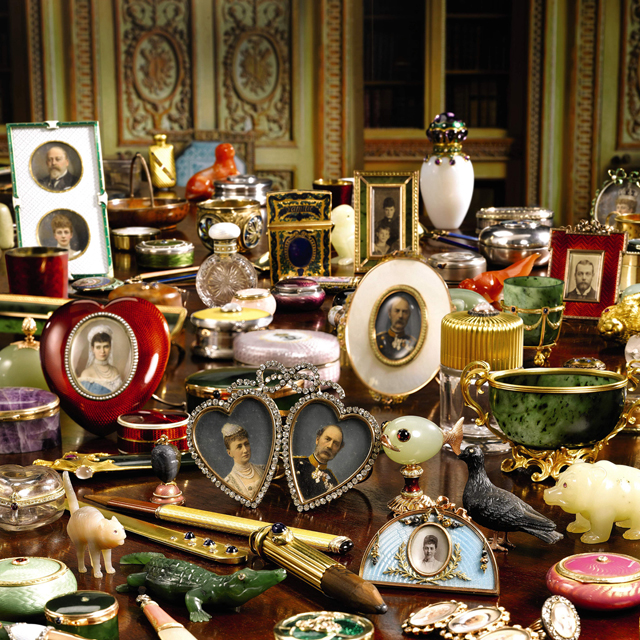
F is for...Faberge
15.10.19
Fabergé is synonymous with opulence and luxury, the imperial house started in 1882, when Peter Carl Fabergé took over his father’s jewellery business. Peter along with his brother Agathon took the ordinary jewellers’ and turned it on its head. Out with the old and in with the new colourful, enamelled and bejewelled objets deluxe.
Faberge is most famed for their Imperial Eggs. In 1885, following a successful exhibition, the Russian Tsar Alexander III commissioned the first egg for his wife, Empress Maria Feodorovna for an Easter gift.
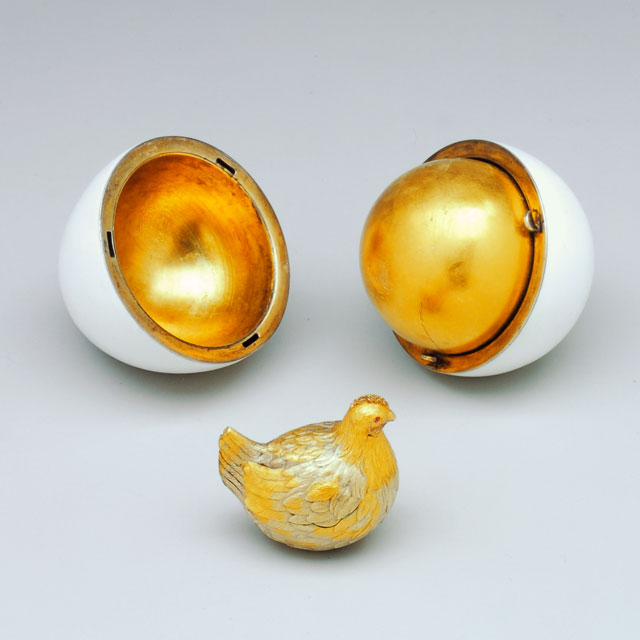
The first egg was a white enamelled “shell” resembling a hen’s egg, the shell opened to reveal a golden yolk sphere. Upon opening the “yolk” a colourful gold hen is revealed which again opens to reveal a miniature diamond replica of the imperial crown along with a ruby pendant.
Photo by Faberge
Being so delighted with the outcome of his commission, the Tsar recruited Peter as the “Goldsmith by special appointment to the Imperial Crown”. The company was given free-rein on all future Imperial Easter eggs, the only stipulation given by the Emperor was “that each one should contain a surprise” – so as each one arrived not even Alexander knew what it would look like.
Can you ever have Un Oeuf?
Today, 43 out of the original 50 Imperial Eggs now sit in museums and private collections around the world. Some of the most famous eggs include:
The Diamond Trellis:
A Jadeite, gold and rose cut diamond egg, lined with white satin, encasing an ivory elephant bejewelled in precious stones. The elephant is an automaton (a self-operating machine), it had a small gold tower on its’ back and a mahout sat on its’ head. The Elephant resembles the badge of the highest order of significance in Denmark, the homeland of the Tsar’s wife. This egg was thought to be missing for many years but has now been found in the Royal British Collection. The egg and the elephant with it’s winding key are not displayed together as they belong to separate collections.
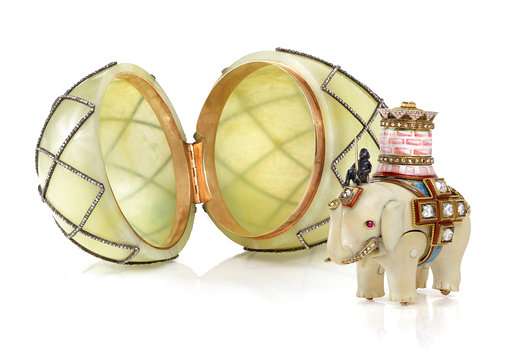
Photo from Houston Museuym of Natural Science.
The Trans-Siberian Railway Egg:
Despite huge cost in both resources and civilian life, by the end of 1900, the railway linking the west and eastern borders of Russia. This egg marks that accomplishment. The shell of the egg is made of onyx, silver, gold and quartz, and in part decorated with colourful enamel. The hinged lid has been enamelled in green and has a three-headed eagle of gold with the Imperial Crown. The face of the egg is silver which has been engraved with a map of the Trans-Siberian railway, with its major stations highlighted with a precious stone. Inside its surprise was a clockwork replica of a gold and platinum steam train with five carriages, totalling 1ft in length with a small golden key to wind it up. The carriages have rock crystal windows with labels: “Mail”, “Smoking”, “Non-Smoking”, “Ladies”, and “Chapel”.
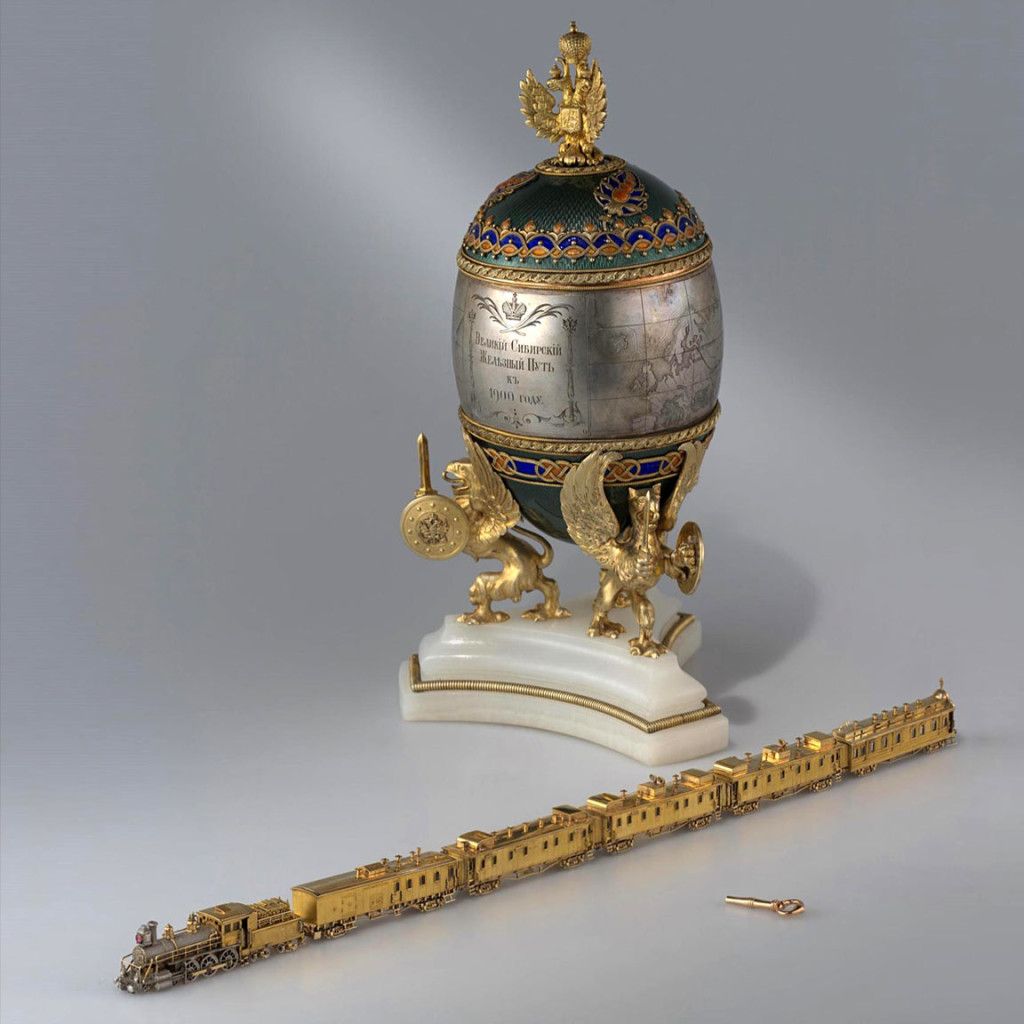
Photo from the Hong Kong Heritage Museum
Lilies of the Valley:
This pink enamel covered guilloché egg is embellished with gold stemmed lilies with green enamelled leaves with flowers made of rubies, pearls and diamonds set in gold. The surprise inside this egg was exposed by twisting a gold-mounted pearl button, revealing three portraits under s miniature of the imperial crown. The portraits are of Tsar Nicholas II and his two eldest daughters, painted on ivory and framed by rose cut diamonds set in gold.
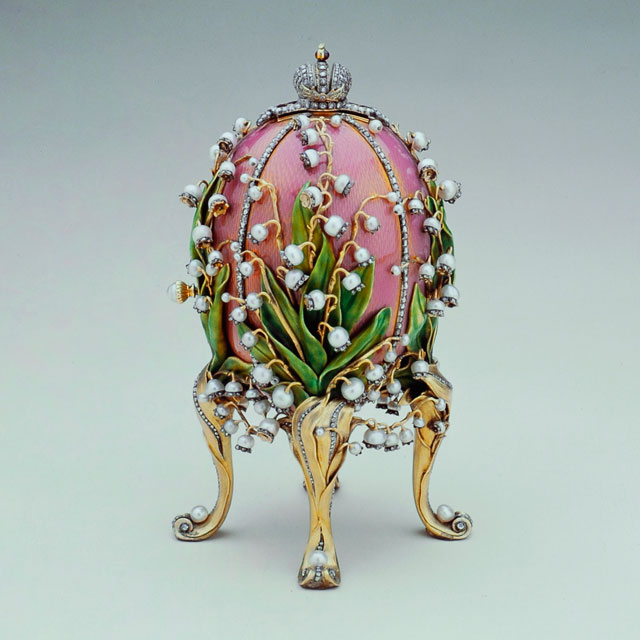
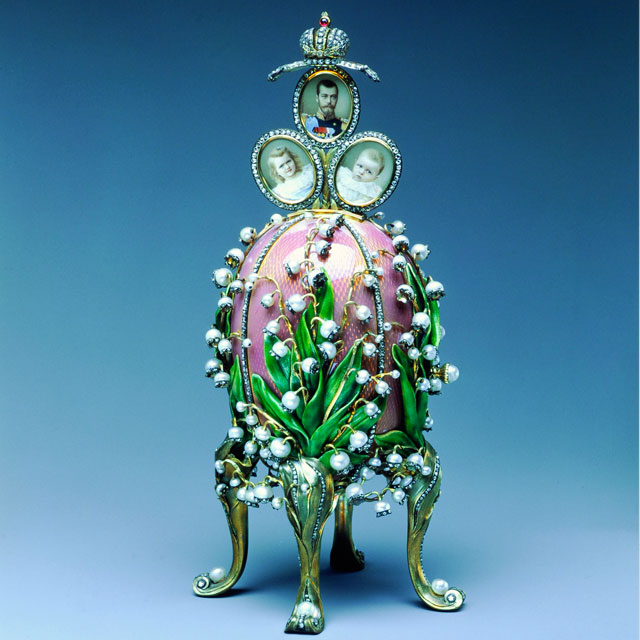
Photos from Faberge
The Coronation Egg:
Thought of as the most iconic of Fabergé’s eggs, this was presented by Nicholas II to his wife Alexandra as a token of her entry into Moscow, on the day of their coronation. The shell is made of different coloured gold with translucent guilloche enamel with black double-headed eagles. The pattern, set with diamonds, resembles the Cloth of Gold robe she wore at the ceremony. The egg’s apex holds a jewelled monogram of the empress under a portrait cut diamond, with the date at the base. One of the more elaborate surprises, this egg contained a miniature of the 18th century carriage built by the Imperial coach maker Johann Buckendhal, which the future Empress used to journey into Moscow. The miniature took master craftsman George Stein, 13 months to complete. It is articulated complete with coiled springs to show the comfort of the carriage. The Gold, red enamel, mother of pearl and diamond coach once contained an emerald drop, later replaced by a yellow diamond briolette which are now both lost.
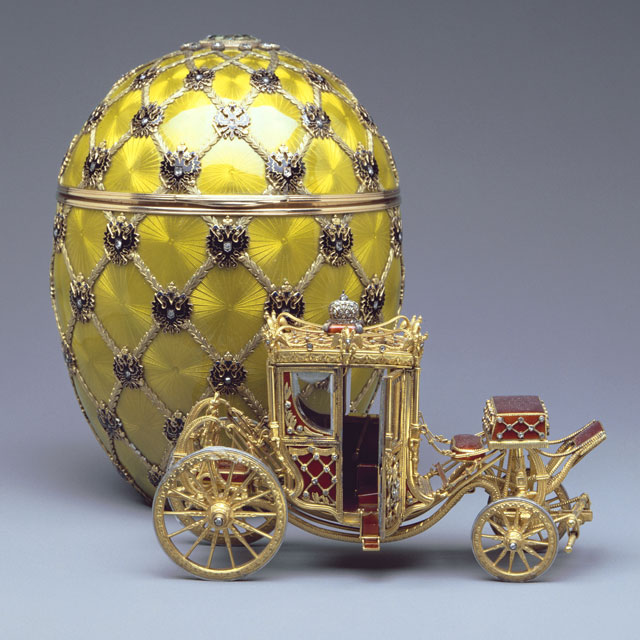
Photo from Forbes
Without a doubt, these incredible pieces are eggs-ecuted to perfection, with many people still on an egg-hunt for the seven that have gone missing, willing to shell out for one of these fry-nite eggs.
Unfortunately, the eggs-quisite masterpieces stopped being hatched in 1917, when the family went into egg-xile after Nicholas II abdicated the throne. During the Russian Revolution the 50 Imperial eggs were looted and transported to Moscow, being sold, smuggled and exchanged. Today the largest egg-xhibits are in the Kremlin Armoury and The Fabergé Museum in St. Petersburg.
Go and spread those wings and go on an egg-splore for yourself!
Laura @ IGR




